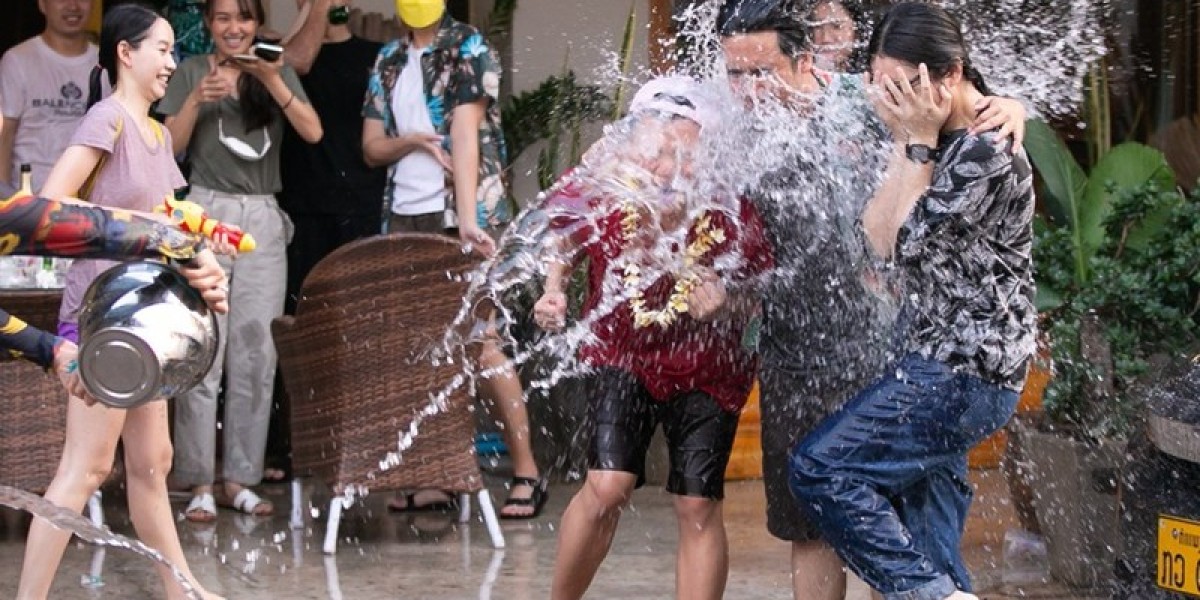Luang Prabang, a UNESCO World Heritage site nestled in northern Laos, is renowned for its breathtaking beauty, tranquil atmosphere, and rich cultural heritage. The city's New Year celebration, also known as Pi Mai or Lao New Year, is one of the most significant and lively events in the Laotian calendar. The festival, which typically takes place in mid-April, is an occasion for family reunions, spiritual rituals, community bonding, and vibrant celebrations. The festivities are a blend of ancient traditions, religious ceremonies, and joyful merriment, creating a truly unique cultural experience that attracts both locals and visitors from all over the world.
The Importance of Lao New Year
Lao New Year, or Pi Mai, is deeply rooted in both Buddhist and agricultural traditions. The holiday marks the end of the dry season and the beginning of the rainy season, which is crucial for the agricultural cycle. It is also a time to pay respects to ancestors, cleanse the soul, and refresh the spirit for the year ahead. The New Year’s celebrations are guided by the cycles of nature, with themes of renewal, purification, and the honoring of religious customs.
Preparation for Pi Mai
The preparations for Pi Mai start days before the actual New Year celebration. Homes and public spaces are thoroughly cleaned as part of the traditional ritual to sweep away bad luck and misfortune from the previous year. People also purchase new clothes to start the year fresh, and families prepare traditional foods such as sticky rice, laap (a minced meat salad), and a variety of desserts to share with guests.
An essential part of the preparation is the building of sand stupas. In the days leading up to the New Year, children and families gather at temples or along riversides to create small sand mounds, decorated with flags, flowers, and incense sticks. This practice is symbolic of the construction of stupas, which are used to pay homage to Buddha and represent the aspiration for peace and good fortune in the coming year.
The Spiritual Side: Water and Cleansing Rituals
Water plays a central role in the spiritual aspects of the Pi Mai celebration. It is believed that water can wash away bad luck, sins, and misfortune, leaving individuals and communities spiritually purified. On the first day of Pi Mai, people visit local temples to pour water over statues of the Buddha and monks. This act of pouring water is called "Baci" and is done with the hope of bringing blessings and good fortune for the year ahead.
The significance of water as a cleansing agent extends to the streets of Luang Prabang, where water fights break out during the New Year celebrations. Armed with water guns, buckets, and hoses, people of all ages engage in playful water battles, spraying each other in good-natured fun. This water fight is one of the most anticipated aspects of the celebration, as it symbolizes the washing away of negativity and the renewal of relationships between family, friends, and the wider community.
Traditional Ceremonies
While the water fights and joyful festivities are an important part of Pi Mai, the holiday’s spiritual foundation is firmly grounded in religious observances. Monks are revered during this time, and much of the day is spent at temples offering alms to the Buddhist clergy and engaging in prayers and rituals. In Luang Prabang, several temples host elaborate ceremonies, including the famous Sai Fong or water blessing, where devotees line up to receive blessings from the monks.
The Baci ceremony, performed at homes and temples, is also an important ritual during Pi Mai. The Baci ceremony involves the tying of cotton strings around the wrists, symbolizing the binding of the spirit to the body. This is thought to ensure good health, prosperity, and spiritual harmony for the coming year. Family members and friends gather together for this ceremony, and it is a moment of deep respect and unity.
Another key event is the procession of the Buddha statues, which takes place in Luang Prabang’s temples. Monks and villagers gather to carry statues of the Buddha to a nearby river or waterfall for purification. This procession is accompanied by prayers, chanting, and offerings, creating a solemn and reflective atmosphere that contrasts with the exuberant water fights and street parties.
Street Festivities and Traditional Entertainment
The streets of Luang Prabang come alive during Pi Mai, with a blend of traditional music, dance, and colorful parades. The festivities are centered around the vibrant Songkran procession, a traditional water parade that showcases local culture. Participants dress in traditional Laotian costumes, and musicians perform with traditional instruments such as the khene (a bamboo mouth organ) and the phin (a stringed instrument). The streets are filled with the sounds of music, laughter, and the rhythm of traditional dances, adding to the sense of community celebration.
In addition to water fights and street entertainment, Luang Prabang also hosts cultural exhibitions, art displays, and handicraft markets during the New Year period. Local artisans display their intricate work, including textiles, pottery, and wood carvings, giving visitors a chance to take home a piece of Laotian heritage. Many of these markets are set up around the main streets, near temples, or by the Mekong River, where both locals and tourists enjoy the atmosphere.
Family and Community Reunions
Family is at the heart of Lao New Year celebrations. Many Laotians return to their ancestral villages or homes to reunite with loved ones. It is a time to strengthen family bonds and show respect for elders, as younger generations often seek blessings and guidance from their parents and grandparents. People offer small gifts to their elders, usually food, flowers, or money, as a gesture of respect and gratitude.
The holiday is also a time for reconciliation and making amends. People are encouraged to let go of grudges, forgive past wrongs, and start anew with a clean slate. The sense of community and togetherness is palpable during Pi Mai, as neighbors, friends, and relatives come together to celebrate the joys of life and wish each other well for the year ahead.
Conclusion
The Luang Prabang New Year celebration, or Pi Mai, is a unique blend of ancient traditions, religious customs, and vibrant festivities. It is a time of spiritual renewal, family reunion, and communal joy. The cleansing rituals, water fights, and traditional ceremonies reflect the deep connection between the people of Luang Prabang and their cultural and religious heritage. For both locals and visitors, Pi Mai is a time to embrace new beginnings, honor the past, and look forward to a prosperous future. The warmth and enthusiasm of the people, combined with the beauty of the surroundings, make Luang Prabang’s New Year celebration an unforgettable experience.








